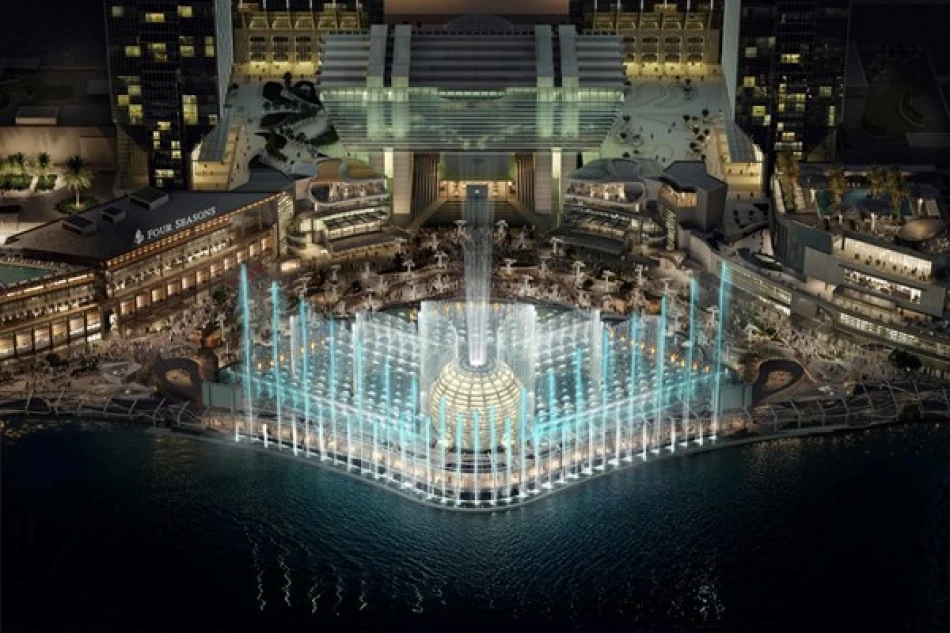
Mubadala Launches Ambitious Marina Island Waterfront Revitalization Project
Abu Dhabi's Mubadala Launches Ambitious Al Mariyah Island Waterfront That Could Rival Dubai's Tourism Magnets
Abu Dhabi's sovereign wealth fund Mubadala has officially broken ground on a spectacular waterfront development for Al Mariyah Island, featuring a 30-meter illuminated sphere surrounded by over 1,000 AI-powered fountains. The project signals Abu Dhabi's intensified push to diversify its economy beyond oil and compete directly with Dubai's entertainment offerings while establishing itself as a global lifestyle destination.
A Strategic Play in the UAE's Tourism Competition
The timing of this announcement reflects Abu Dhabi's accelerated efforts to capture a larger share of the UAE's booming tourism market. While Dubai has long dominated with attractions like the Burj Khalifa and Palm Jumeirah, Abu Dhabi is now deploying its substantial sovereign wealth resources to create competing spectacles.
The centerpiece—a glowing 30-meter sphere surrounded by cascading water features reaching heights of 75 meters—draws clear inspiration from successful global attractions. The fountain shows, choreographed to music by renowned composer Ramin Djawadi and designed by WET (the company behind Las Vegas's Bellagio fountains), suggest Abu Dhabi is importing proven entertainment formulas.
Beyond Spectacle: Infrastructure for Year-Round Appeal
More strategically significant than the visual attractions are the project's climate-adaptation features. The development includes shaded outdoor cooling systems designed to maintain visitor comfort during the UAE's brutal summer months—a persistent challenge for Gulf tourism destinations.
The addition of waterfront dining spaces, public event areas, and a marine walkway that brings visitors to the water's edge addresses a key gap in Abu Dhabi's tourism infrastructure. Unlike Dubai's beach-focused attractions, this development leverages Al Mariyah Island's urban waterfront positioning in the capital's financial district.
Sovereign Wealth Meets Tourism Strategy
Mubadala's direct involvement signals that this project transcends typical real estate development. As one of the world's largest sovereign wealth funds with over $280 billion in assets, Mubadala's backing suggests Abu Dhabi views tourism infrastructure as a strategic national priority rather than merely a commercial venture.
Dr. Bakhit Al Kathiri, CEO of Mubadala's UAE Investments sector, framed the project as a "strategic investment in the island's future," language that reflects the broader economic diversification imperative driving UAE policy since oil price volatility began affecting Gulf budgets in the 2010s.
Global Context: Following Singapore's Playbook
The development mirrors successful urban entertainment districts in Singapore and Hong Kong, where governments have used spectacular public installations to anchor broader tourism ecosystems. Singapore's Gardens by the Bay, with its iconic Supertree Grove, generated significant tourism revenue and international recognition—a model Abu Dhabi appears to be adapting for its own urban context.
The emphasis on AI-powered water features and technologically sophisticated entertainment also aligns with the UAE's broader "smart city" positioning, competing with destinations like Singapore and Seoul that have successfully marketed themselves as high-tech tourism hubs.
Market Implications: Real Estate and Regional Competition
For investors, this development could significantly impact Al Mariyah Island's property values, particularly given its location adjacent to Abu Dhabi's financial district. The project may also influence tourism distribution patterns within the UAE, potentially drawing visitors who might otherwise focus exclusively on Dubai.
The development's completion timeline will be crucial—if delivered efficiently, it could establish Abu Dhabi as a credible alternative to Dubai for international visitors seeking luxury entertainment experiences. However, the project's success will ultimately depend on its ability to generate sustained visitor interest beyond the initial novelty period, a challenge that has affected similar ambitious developments across the Gulf region.
Most Viewed News

 Layla Al Mansoori
Layla Al Mansoori






